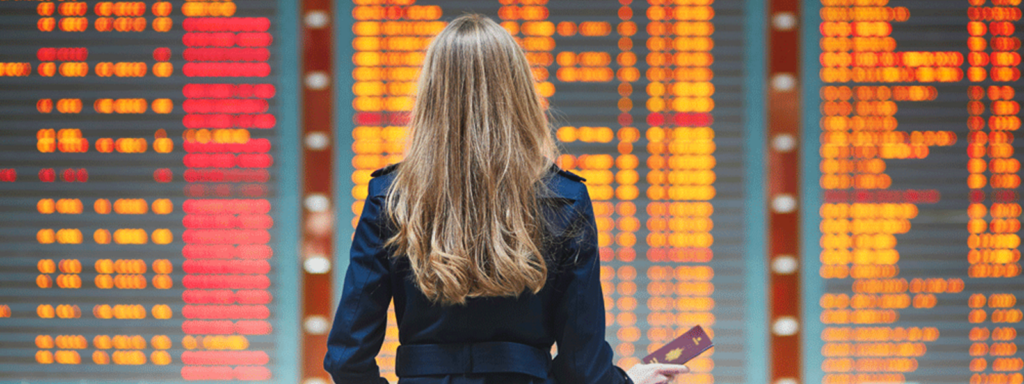Business as unusual
Why manufacturing and tourism fare badly during economic crises
July 2020
Manufacturing and tourism are two key drivers in some of the world’s major economies. They are also sectors hit disproportionately hard during an economic crisis, when discretionary spending declines. During a crisis caused by a pandemic, both supply and demand are impacted, as workers in factories or in travel and leisure who need to work together or close to customers can no longer operate.
China and Japan in Asia and Germany and Italy within the EU lead the way in manufacturing, while Australia and New Zealand, for example, have economies heavily supported by tourism. Italy has a foot in both camps, as its cultural appeal creates a big draw for tourists from around the world.

The mother of all financial crises
The COVID-19 pandemic has changed the global economy in a very short period of time and has even been described by one Harvard economist as having the potential to be ‘the mother of all financial crises1.The pace of the global recovery will depend heavily on how quickly manufacturing and tourism can return to pre-COVID-19 levels. In the interim, governments are supporting businesses and families with unprecedented levels of fiscal support to prop up these key industries and guide their respective economies through this crisis.
Chinese economy under pressure
At the outset of the pandemic, China was hit heavily by strict lockdowns enforced across key industrial districts, impacting many manufacturing plants.
The impact was severe, causing the first contraction in the country’s economy in decades with a fall of 6.8% in GDP year-on-year in the first quarter of 20202. This is the first fall since 1992 when the collection of these figures began.This had a ripple effect globally, once China‘s output was reduced, manufacturers worldwide that rely on parts and services from China saw their own manufacturing processes stall.
In recent months we have seen some positive signs of recovery in China. As the starting point of the supply chain across a number of key manufacturing sectors China’s recovery will allow other countries to pick up the pace of their own domestic recovery, driving a global rebound.
European manufacturing looks to restart
Europe’s main seats of manufacturing – Germany and Italy specifically – have also been very hard hit by COVID-19 closures. But some of Germany’s car manufacturers have already restarted their operations, with their plants in China leading the way on health measures that need to be implemented to prevent infections3. Given the importance of the German economy to the strength of the Eurozone and the euro as a result, returning the manufacturing sector to full capacity in both countries as soon as possible is key to boosting the fortunes of Europe as a whole.

A downturn in global GDP
GDP data provides a baseline indicator of broader economic health. As numbers decline, they suggest a downturn in activity and economic hardship. Estimates for growth throughout Q2 have been downgraded worldwide, as lockdown measures throw key industries into turmoil.
Just as factory closures have impacted manufacturing, border closures have impacted Travel and tourism which as an industry contributed 10.4% to global GDP in 20194.
International tourism is anticipated to fall between 20-30% in 20205 compared with 2019.This disproportionately impacts countries that rely on international travel, for example tourism is Australia’s third largest and New Zealand’s largest export, suggesting extended disruption and border closures will continue to create downward GDP pressure.
Global recession is certain
The International Monetary Fund (IMF) in its World Economic Outlook for April projected global growth to fall by -3% which is a downgrade of 6.3 percentage points since January6, and the impact of GDP falls on the wider economic sentiment can’t be overstated.
The risk of recession, culminating in job losses and the resulting lower consumer spending create real problems for countries looking to reverse their fortunes.But at the time of writing, there are some glimmers of hope as lockdown rules ease worldwide, and countries look to restart ‘business almost as usual’.
What to watch
Currency moves can be tough to predict in times of crisis, but there are a few things to look for. As more manufacturing plants open once lockdowns ease, all things being equal we should see currencies strengthen in those countries where the economy relies heavily on this, such as China and the Eurozone. For others, such as Australia and New Zealand, a return to growth in travel and tourism is likely to have the biggest impact.
For the Australian and New Zealand dollar, their strength is likely to be very closely linked to how fast China’s manufacturing industry revives, driving demand for key commodity exports such as iron ore, copper and dairy products.
Download the OFX Currency Outlook
Learn more in the latest edition of the OFX Currency Outlook. It’s been produced to help you navigate market movements today, and to understand what to watch out for in the coming months.